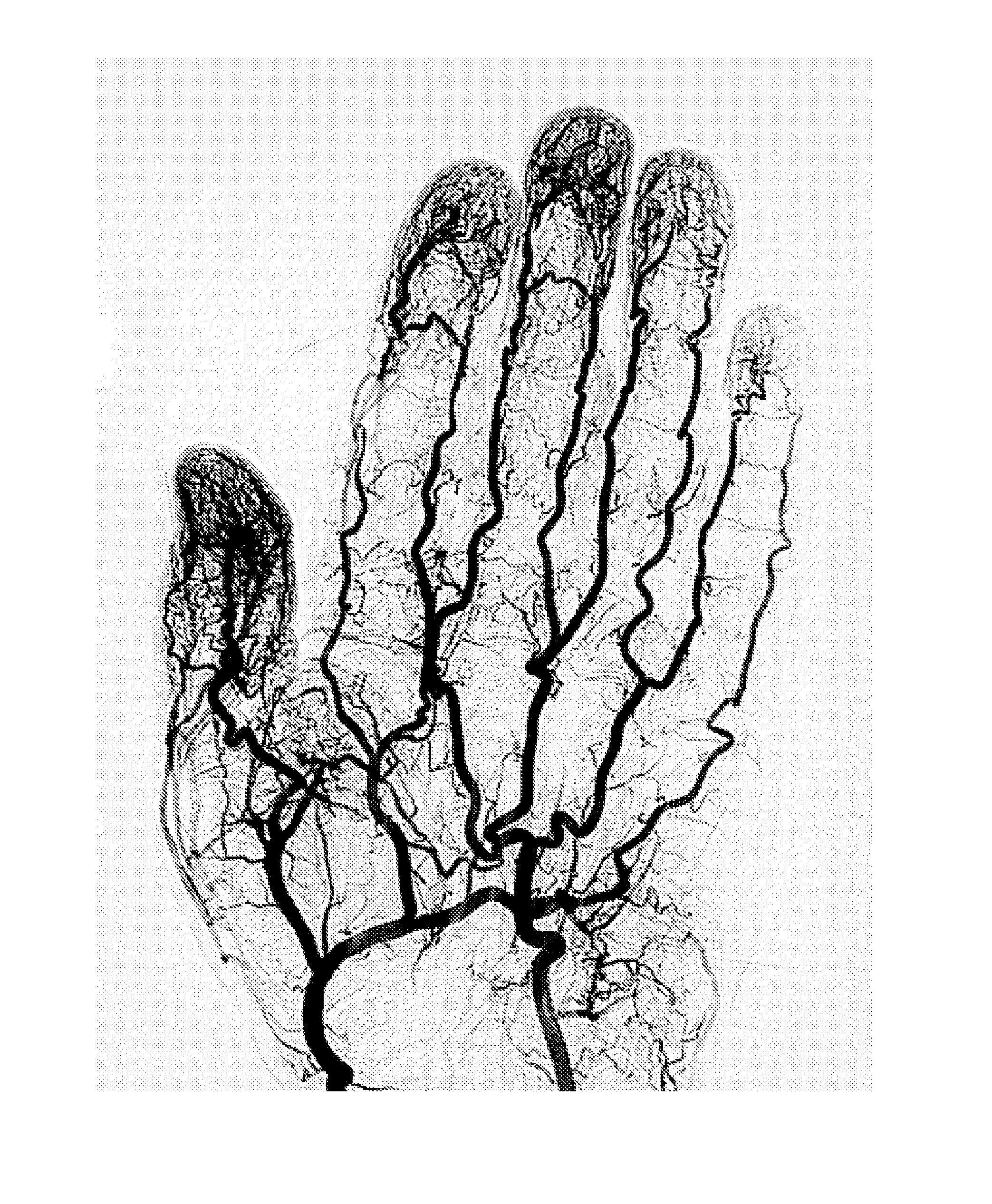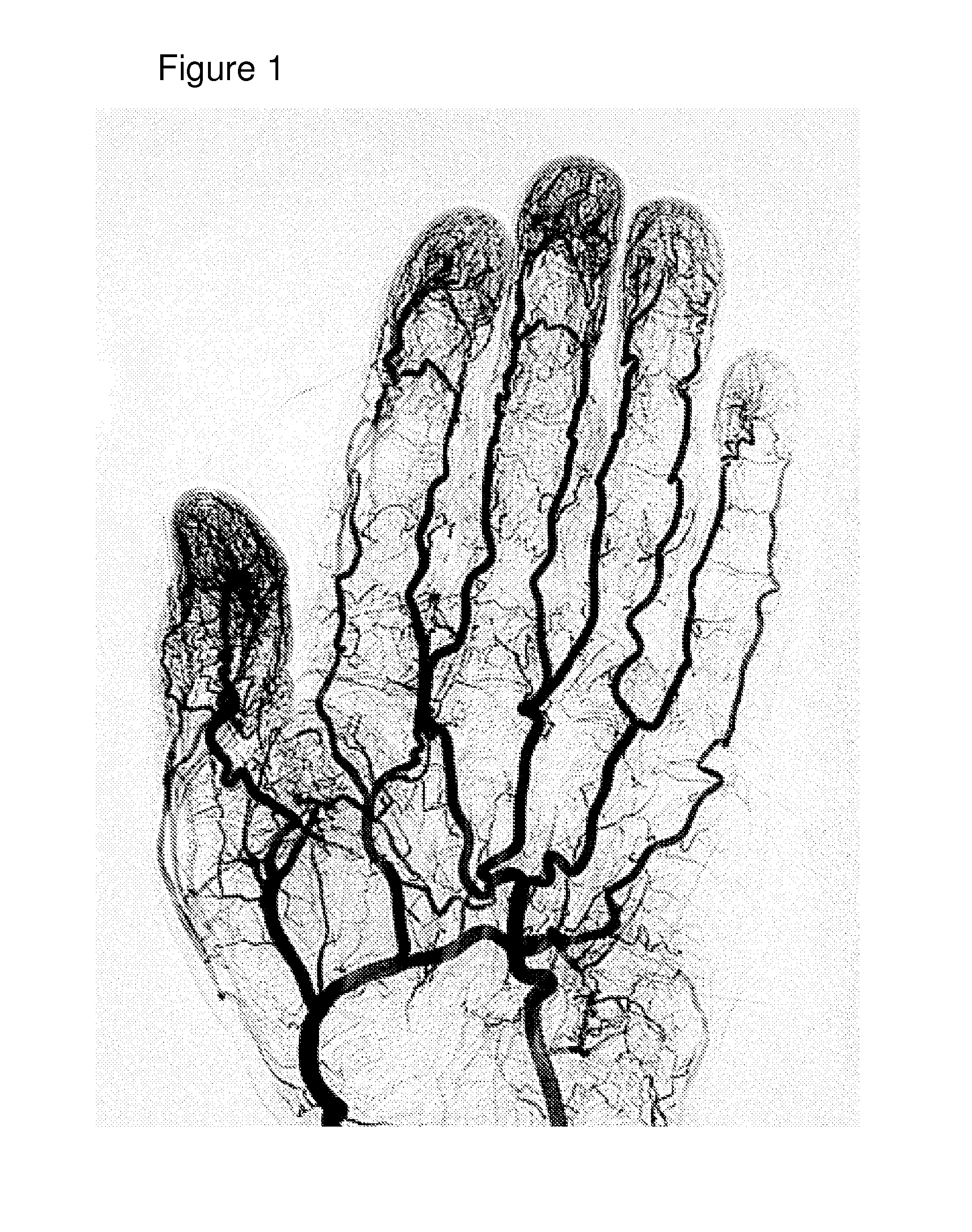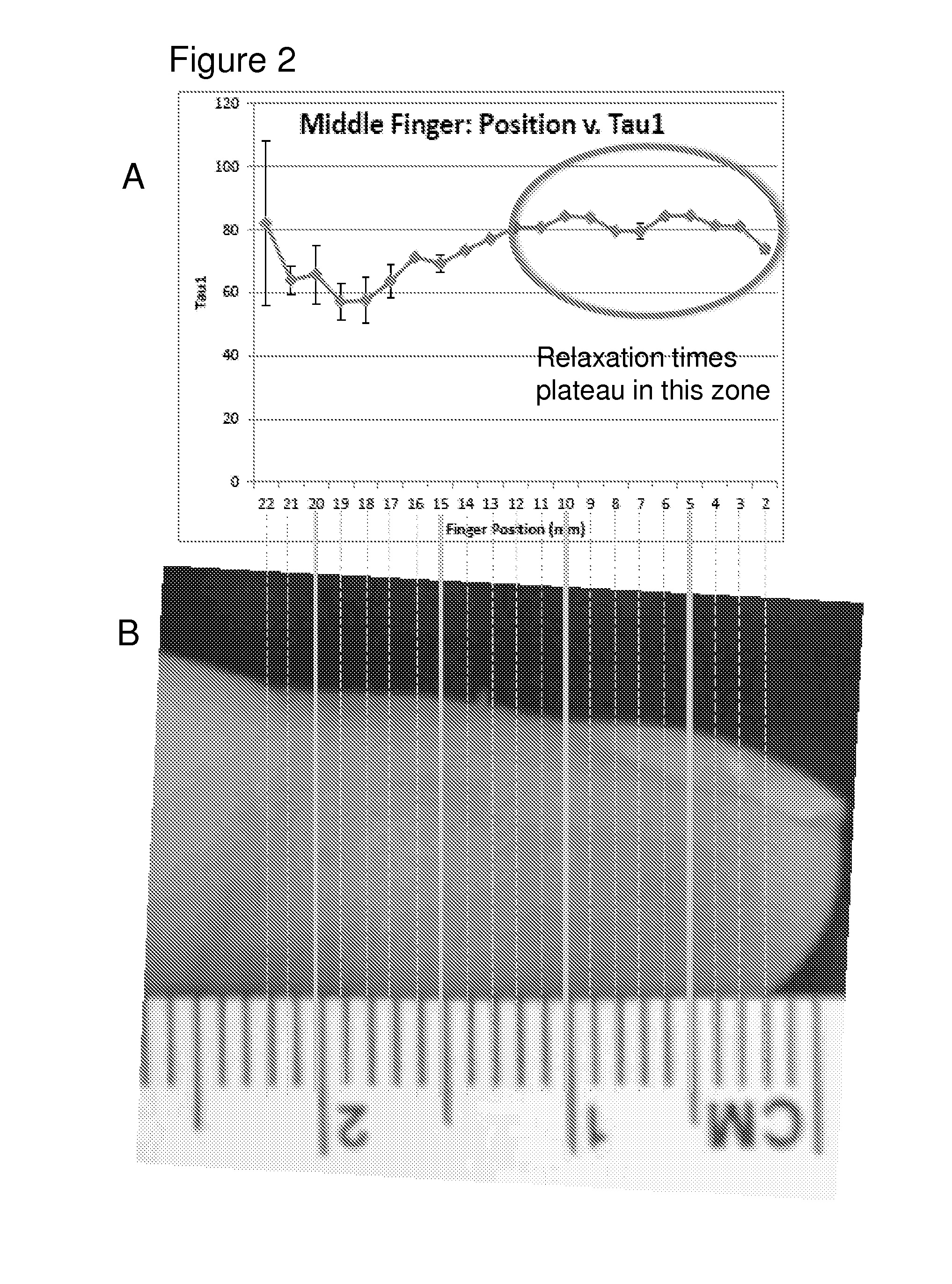Nmr sensor and methods for rapid, non-invasive determination of hydration state or vascular volume of a subject
a technology of hydration state and vascular volume, applied in the direction of nmr measurement, instruments, catheters, etc., can solve the problems of physical and cognitive performance proportional decline, water imbalance, hypernatremia (dehydration),
- Summary
- Abstract
- Description
- Claims
- Application Information
AI Technical Summary
Benefits of technology
Problems solved by technology
Method used
Image
Examples
example 1
Relaxation Analysis, Murine Whole-Body
[0148]This example demonstrates the feasibility of measuring hydration changes through the use of exponential regression fitting of raw NMR data. Mathematically, the two relaxation rates (T1 and T2) can be modeled with the following exponential equations:
MT1(t)=∑i=1nMn(1--tT1n)and(Eq.1)MT2(t)=∑i=1nMn(-tT2n)(Eq.2)
[0149]where in both cases M is the signal magnitude, n is the number of components that make up the NMR signal. It should be noted that even though a sample may contain more than a single component—it can be modeled with a single component regression (n=1); however, there may be a larger fitting error that should be noted. In the most ideal situation, the exact number of components will be known and the correct n for the model will be used. To improve the accuracy of the multi-component regression fit; alternatively, a spectrum based approach may be more appropriate (described in Example 2).
[0150]This single exponential fit (n=1) for T2 ...
example 2
Tissue-Specific Spectrum Analysis
[0152]This example demonstrates the feasibility of measuring water content of discrete fluid compartments (intracellular, extracellular, interstitial, intravascular, etc.) of a given tissue through signal processing. Raw relaxation data can be deconvoluted into a relaxogram, FIG. 4. This method separates the T2 relaxation data into all the resolvable components as a function of relaxation time and signal intensity. A major benefit to this method is the fact that the number of components need not be known for accurate analysts, in contrast to the exponential regression method previously described. As shown in FIG. 4, water location in various tissues and within different compartments of a tissue yields differences in measured relaxation rates and signal intensities.
[0153]Data deconvolution and multi-exponential regression analysis provide a level of resolution that facilitates the tracking of changes of different tissues and tissue compartments. The r...
example 3
Targeted Tissue Analysis—Intravascular Fluid Load Assessment in Humans
[0155]This example illustrates the feasibility of assessing hydration state by NMR measurement of a specific anatomic location. Different anatomic locations are composed of different tissue types / fluid compartments and some locations may be more sensitive to changes in hydration than others. A custom NMR sensor was designed and constructed to perform relaxation measurements on the finger because we were interested in measuring intravascular water content. Changes in the intravascular water content were measured by ingesting 500 mL of water within 2 minutes (water bolus). Finger measurements were taken at time points up to 1 hour after ingestion. FIG. 7 depicts an upward trend as a function of time after water ingestion. As described previously, a single exponential regression was employed to assess the acquired data.
[0156]The trends evident in these noninvasively-obtained results line up with results from another ...
PUM
 Login to View More
Login to View More Abstract
Description
Claims
Application Information
 Login to View More
Login to View More - R&D
- Intellectual Property
- Life Sciences
- Materials
- Tech Scout
- Unparalleled Data Quality
- Higher Quality Content
- 60% Fewer Hallucinations
Browse by: Latest US Patents, China's latest patents, Technical Efficacy Thesaurus, Application Domain, Technology Topic, Popular Technical Reports.
© 2025 PatSnap. All rights reserved.Legal|Privacy policy|Modern Slavery Act Transparency Statement|Sitemap|About US| Contact US: help@patsnap.com



